Hawaiian vetch (Vicia Menziesii) FREE COLOR PHOTO: Hawaiian vetch (Vicia Menziesii) Spreng. Hawaiian wild broad bean, Symbol: VIME, Group: Dicot, Family: Fabaceae, Growth Habit: Vine Forb/herb, Duration: Perennial, U.S. Nativity: Native. View 200 genera in Fabaceae, 36 species in Vicia Hawaiian wild broad bean (Vicia menziesii) is a vine found on the eastern slopes of Mauna Loa and Mauna Kea on the Island of Hawai`i. This branching plant climbs to the subcanopy of the forests that it inhabits and reaches lengths of up to 60 feet.
Each vine may produce 200 or more pinkish-rose flowers, as we see in this example that hang from it's thin, green stalk. Vicia menziesii is Hawai'i's First Officially Listed Endangered Plant Species (USFWS 1978a). Hawaiian wild broad bean (vetch) exists on 1 site (Hawai`i) and consists of 2 populations that contain 15-50 individuals (larger population at Keauhou-Kilauea (USFWS 2001)
Title: Hawaiian wild broad bean (vetch), Alternative Title: (Vicia Menziesii), Creator: Lemoureux, C., Source: WO-2582-CD-44B, Publisher: U.S. Fish and Wildlife Service, Contributor: DIVISION OF PUBLIC AFFAIRS, Language: EN - ENGLISH, Rights: (public domain), Audience: (general), Subject: Botany, Plants, Plant, vetch.
Unless otherwise indicated, resources in the Digital Library System are in the public domain. No restrictions or copyrights are placed upon these materials. You may credit the source of the resource using the information contained in the "Creator" or "Rights" field of the resource record.
USDA, NRCS. 2005. The PLANTS Database, Version 3.5 (plants.usda.gov). Data compiled from various sources by Mark W. Skinner. National Plant Data Center, Baton Rouge, LA 70874-4490 USA.
This file is a work of a U.S. Fish and Wildlife Service employee, taken or made during the course of the person's official duties. As a work of the U.S. federal government, the file is in the public domain.
Generally speaking, works created by U.S. Government employees are not eligible for copyright protection in the United States. See Circular 1 "COPYRIGHT BASICS" PDF from the U.S. Copyright Office.
Kingdom Plantae – Plants, Subkingdom Tracheobionta – Vascular plants, Superdivision Spermatophyta – Seed plants, Division Magnoliophyta – Flowering plants, Class Magnoliopsida – Dicotyledons, Subclass Rosidae –, Order Fabales –, Family Fabaceae – Pea family, Genus Vicia L. – vetch, Species Vicia menziesii Spreng. – Hawai'i vetch.
public domain, royalty free, copyright free, high resolution, images, stock photos, jpeg, jpg, free for commercial use, clip art, clipart, clip-art.
Wednesday, August 31, 2005
Monday, August 29, 2005
woolly groundsel (Packera cana) COLOR PHOTO
woolly groundsel (Packera cana) FREE COLOR PHOTO - woolly groundsel (Packera cana) (Hook.) W.A. Weber and A. Löve, Symbol: PACA15, Group: Dicot, Family: Asteraceae, Growth Habit: Forb/herb Subshrub Shrub, Duration: Perennial , U.S. Nativity: Native. View 440 genera in Asteraceae, 53 species in PackeraActive Growth Period Spring and Summer, Fruit/Seed Color: Brown, After Harvest Regrowth Rate: Slow, Height (feet) 1.5, Flower Color Yellow, Adapted to Coarse Textured Soils, Yes. Moisture Use Low, Adapted to Fine Textured Soils, Yes. pH, Minimum 6.5. Adapted to Medium Textured Soils Yes. pH, Maximum 8.5. Precipitation, Minimum 8, Drought Tolerance High, Precipitation, Maximum 18. Salinity Tolerance Low, Frost Free Days, Minimum 130. Shade Tolerance, Intolerant, Temperature, Minimum (°F) -43, Bloom Period Late Spring.
Title: Groundsel, Alternative Title: (Packera cana), Creator: Stolz, Gary M., Source: WO8254-001, Publisher: U.S. Fish and Wildlife Service, Contributor: DIVISION OF PUBLIC AFFAIRS, Language: EN - ENGLISH, Rights: (public domain), Audience: (general), Subject: botany, plants, flowering plants, New Mexico.
Unless otherwise indicated, resources in the Digital Library System are in the public domain. No restrictions or copyrights are placed upon these materials. You may credit the source of the resource using the information contained in the "Creator" or "Rights" field of the resource record.
USDA, NRCS. 2005. The PLANTS Database, Version 3.5 (plants.usda.gov). Data compiled from various sources by Mark W. Skinner. National Plant Data Center, Baton Rouge, LA 70874-4490 USA.
Kingdom Plantae – Plants, Subkingdom Tracheobionta – Vascular plants, Superdivision Spermatophyta – Seed plants, Division Magnoliophyta – Flowering plants, Class Magnoliopsida – woolly groundsel (Packera cana) FREE COLOR PHOTO: Dicotyledons, Subclass Asteridae –, Order Asterales –, Family Asteraceae – Aster family, Genus Packera A. & D. Löve – ragwort, Species Packera cana (Hook.) W.A. Weber & A. Löve – woolly groundsel.
This file is a work of a U.S. Fish and Wildlife Service employee, taken or made during the course of the person's official duties. As a work of the U.S. federal government, the file is in the public domain.
Generally speaking, works created by U.S. Government employees are not eligible for copyright protection in the United States. See Circular 1 "COPYRIGHT BASICS" PDF from the U.S. Copyright Office.
public domain, royalty free, copyright free, high resolution, images, stock photos, jpeg, jpg, free for commercial use, clip art, clipart, clip-art.
Title: Groundsel, Alternative Title: (Packera cana), Creator: Stolz, Gary M., Source: WO8254-001, Publisher: U.S. Fish and Wildlife Service, Contributor: DIVISION OF PUBLIC AFFAIRS, Language: EN - ENGLISH, Rights: (public domain), Audience: (general), Subject: botany, plants, flowering plants, New Mexico.
Unless otherwise indicated, resources in the Digital Library System are in the public domain. No restrictions or copyrights are placed upon these materials. You may credit the source of the resource using the information contained in the "Creator" or "Rights" field of the resource record.
USDA, NRCS. 2005. The PLANTS Database, Version 3.5 (plants.usda.gov). Data compiled from various sources by Mark W. Skinner. National Plant Data Center, Baton Rouge, LA 70874-4490 USA.
Kingdom Plantae – Plants, Subkingdom Tracheobionta – Vascular plants, Superdivision Spermatophyta – Seed plants, Division Magnoliophyta – Flowering plants, Class Magnoliopsida – woolly groundsel (Packera cana) FREE COLOR PHOTO: Dicotyledons, Subclass Asteridae –, Order Asterales –, Family Asteraceae – Aster family, Genus Packera A. & D. Löve – ragwort, Species Packera cana (Hook.) W.A. Weber & A. Löve – woolly groundsel.
This file is a work of a U.S. Fish and Wildlife Service employee, taken or made during the course of the person's official duties. As a work of the U.S. federal government, the file is in the public domain.
Generally speaking, works created by U.S. Government employees are not eligible for copyright protection in the United States. See Circular 1 "COPYRIGHT BASICS" PDF from the U.S. Copyright Office.
public domain, royalty free, copyright free, high resolution, images, stock photos, jpeg, jpg, free for commercial use, clip art, clipart, clip-art.
Sunday, August 28, 2005
Golden Currant (Ribes aureum) COLOR PHOTO
Golden Currant (Ribes aureum) FREE COLOR PHOTO - Golden Currant (Ribes aureum), Pursh golden currant, Symbol: RIAU, Group: Dicot, Family: Grossulariaceae, Growth Habit: Shrub, Duration: Perennial, U.S. Nativity: Native. View 3 genera in Grossulariaceae, 57 species in RibesThe fragrant (clove odor), golden-yellow flowers of spring, yellowish to red fall foliage, edible fruits, and wide ecological range make golden currant a valued ornamental shrub for a variety of natural landscapes. Golden currant is easily cultivated from seed or cuttings.
A native shrub 1-3 m tall, spineless, with numerous, erect-arching branches forming an irregular crown up to 6 meters tall or more; bark gray to red-brown.
Alternate common names, Buffalo currant, fragrant golden currant, golden flowering currant, clove currant, spicebush.
Uses, Fruits of Ribes species, including the golden currant, are a valuable food source for songbirds, chipmunks, ground squirrels, as well as numerous wildlife species and other animals. The sweet and flavorful fruits are full of seeds but are popular for making jam, jelly, pie, and even ice cream. Some western Indian tribes used currants (Ribes species) for making pemmican. The Kiowa Indians believed that snakes were afraid of the currant bush and used it as a snakebite remedy. Other tribes have used the fruits to color clay pots.
golden currant is widespread in the western US and southeastern Canada, with populations in Ontario and perhaps Quebec, as far south in the US as trans-Pecos Texas. Var. gracillimum is endemic to California. Var. villosum in the central US, from western Texas to Montana and eastward to New York and Vermont; it is absent from the Atlantic seaboard.
Title: Golden Currant, Alternative Title: (none), Creator: Smith, Elise, Source: WO-8567-CD-39B, Publisher: U.S. Fish and Wildlife Service, Contributor: DIVISION OF PUBLIC AFFAIRS, Language: EN - ENGLISH, Rights: (public domain), Audience: (general), Subject: Plant, Plants, Flowering Plants, Botany, Wichita Mountains National Wildlife Refuge.
Unless otherwise indicated, resources in the Digital Library System are in the public domain. No restrictions or copyrights are placed upon these materials. You may credit the source of the resource using the information contained in the "Creator" or "Rights" field of the resource record.
This file is a work of a U.S. Fish and Wildlife Service employee, taken or made during the course of the person's official duties. As a work of the U.S. federal government, the file is in the public domain.
Generally speaking, works created by U.S. Government employees are not eligible for copyright protection in the United States. See Circular 1 "COPYRIGHT BASICS" PDF from the U.S. Copyright Office.
USDA, NRCS. 2005. The PLANTS Database, Version 3.5 (plants.usda.gov). Data compiled from various sources by Mark W. Skinner. National Plant Data Center, Baton Rouge, LA 70874-4490 USA.
Kingdom Plantae – Plants, Subkingdom Tracheobionta – Vascular plants, Superdivision Spermatophyta – Seed plants, Division Magnoliophyta – Flowering plants, Class Magnoliopsida – Dicotyledons, Subclass Rosidae –, Order Rosales –, Family Grossulariaceae – Currant family, Genus Ribes L. – currant, Species Ribes aureum Pursh – golden currant.
public domain, royalty free, copyright free, high resolution, images, stock photos, jpeg, jpg, free for commercial use, clip art, clipart, clip-art.
A native shrub 1-3 m tall, spineless, with numerous, erect-arching branches forming an irregular crown up to 6 meters tall or more; bark gray to red-brown.
Alternate common names, Buffalo currant, fragrant golden currant, golden flowering currant, clove currant, spicebush.
Uses, Fruits of Ribes species, including the golden currant, are a valuable food source for songbirds, chipmunks, ground squirrels, as well as numerous wildlife species and other animals. The sweet and flavorful fruits are full of seeds but are popular for making jam, jelly, pie, and even ice cream. Some western Indian tribes used currants (Ribes species) for making pemmican. The Kiowa Indians believed that snakes were afraid of the currant bush and used it as a snakebite remedy. Other tribes have used the fruits to color clay pots.
golden currant is widespread in the western US and southeastern Canada, with populations in Ontario and perhaps Quebec, as far south in the US as trans-Pecos Texas. Var. gracillimum is endemic to California. Var. villosum in the central US, from western Texas to Montana and eastward to New York and Vermont; it is absent from the Atlantic seaboard.
Title: Golden Currant, Alternative Title: (none), Creator: Smith, Elise, Source: WO-8567-CD-39B, Publisher: U.S. Fish and Wildlife Service, Contributor: DIVISION OF PUBLIC AFFAIRS, Language: EN - ENGLISH, Rights: (public domain), Audience: (general), Subject: Plant, Plants, Flowering Plants, Botany, Wichita Mountains National Wildlife Refuge.
Unless otherwise indicated, resources in the Digital Library System are in the public domain. No restrictions or copyrights are placed upon these materials. You may credit the source of the resource using the information contained in the "Creator" or "Rights" field of the resource record.
This file is a work of a U.S. Fish and Wildlife Service employee, taken or made during the course of the person's official duties. As a work of the U.S. federal government, the file is in the public domain.
Generally speaking, works created by U.S. Government employees are not eligible for copyright protection in the United States. See Circular 1 "COPYRIGHT BASICS" PDF from the U.S. Copyright Office.
USDA, NRCS. 2005. The PLANTS Database, Version 3.5 (plants.usda.gov). Data compiled from various sources by Mark W. Skinner. National Plant Data Center, Baton Rouge, LA 70874-4490 USA.
Kingdom Plantae – Plants, Subkingdom Tracheobionta – Vascular plants, Superdivision Spermatophyta – Seed plants, Division Magnoliophyta – Flowering plants, Class Magnoliopsida – Dicotyledons, Subclass Rosidae –, Order Rosales –, Family Grossulariaceae – Currant family, Genus Ribes L. – currant, Species Ribes aureum Pursh – golden currant.
public domain, royalty free, copyright free, high resolution, images, stock photos, jpeg, jpg, free for commercial use, clip art, clipart, clip-art.
Saturday, August 27, 2005
American ginseng (Panax quinquefolius L.) COLOR PHOTO
American ginseng (Panax quinquefolius L.) FREE COLOR PHOTO: American ginseng (Panax quinquefolius L.) Symbol: PAQU, Group: Dicot, Family: Araliaceae, Growth Habit: Forb/herb, Duration: Perennial, U.S. Nativity: Native. View 17 genera in Araliaceae, 4 species in PanaxAmerican ginseng was much used by Native Americans. Menominee hunters, who chewed the root to impart a lure to the breath and to attract deer. The plant was used by Meskwaki women to obtain a husband. A mixture consisted of ground ginseng, mica, gelatin, and snake meat. The Pawnee also used ginseng roots in combination with certain other substances as a love charm. The Ojibwe considered the root a goodluck charm if carried in the pocket.
Huron Smith (1932) recorded a potentially sustainable way to harvest the roots among the Ojibwe. .They only gathered the root when the red berries were mature, but before they were ready to drop. Into the hole from whence the root came, they would thrust the whole fruiting top, and carefully firm the soil upon it. Knowing the location well, they would revisit the place in three to five years and find more roots than they harvested in the first instance..
The roots were used in eyewash by the Iroquois to treat the sore eyes of two-year-old children. The root could also be steeped in warm water and drunk for alleviating sores on the body. The pulverized root was smoked to treat asthma. Women of the Penobscot tribe took an infusion of the root to increase fertility. The Delaware used the roots and other plant parts as a general tonic.
American ginseng is in high demand in the United States and China as an herbal remedy. It is used for stress and to increase energy and mental acuity in the United States. In China, it is a panacea for sexual impotency, nervousness, vomiting, and dyspepsia.
In general, this species has been depleted by overcollecting for commercial purposes. Many states, such as Maryland, have a permit process instituted for collectors in the wild.
This aromatic herbaceous perennial has once palmately compound leaves arranged in a single whorl. The leaves are oblong-obovate to obovate, 6-15 cm, and conspicuously serrate. The stems are solitary, 2-6 dm, and with one flower umbel per stem. The flowers are greenish-white, all or mostly perfect. There are two styles and five stamens. The fruits are berry-like, bright red drupes, 1 cm thick as we see in this example.
Title: Ginseng American, Alternative Title: (Panax quinquefolius), Creator: Pittillo, Dan J., Source: WO-1254-46a, Publisher: U.S. Fish and Wildlife Service, Contributor: DIVISION OF PUBLIC AFFAIRS, Language: EN - ENGLISH, Rights: (public domain), Audience: (general), Subject: plant, plants, botany.
Unless otherwise indicated, resources in the Digital Library System are in the public domain. No restrictions or copyrights are placed upon these materials. You may credit the source of the resource using the information contained in the "Creator" or "Rights" field of the resource record.
USDA, NRCS. 2005. The PLANTS Database, Version 3.5 (plants.usda.gov). Data compiled from various sources by Mark W. Skinner. National Plant Data Center, Baton Rouge, LA 70874-4490 USA.
This file is a work of a U.S. Fish and Wildlife Service employee, taken or made during the course of the person's official duties. As a work of the U.S. federal government, the file is in the public domain.
Generally speaking, works created by U.S. Government employees are not eligible for copyright protection in the United States. See Circular 1 "COPYRIGHT BASICS" PDF from the U.S. Copyright Office.
Kingdom Plantae – Plants, Subkingdom Tracheobionta – Vascular plants, Superdivision Spermatophyta – Seed plants, Division Magnoliophyta – Flowering plants, Class Magnoliopsida – Dicotyledons, Subclass Rosidae –, Order Apiales –, Family Araliaceae – Ginseng family, Genus Panax L. – ginseng, Species Panax quinquefolius L. – American ginseng.
public domain, royalty free, copyright free, high resolution, images, stock photos, jpeg, jpg, free for commercial use, clip art, clipart, clip-art.
Huron Smith (1932) recorded a potentially sustainable way to harvest the roots among the Ojibwe. .They only gathered the root when the red berries were mature, but before they were ready to drop. Into the hole from whence the root came, they would thrust the whole fruiting top, and carefully firm the soil upon it. Knowing the location well, they would revisit the place in three to five years and find more roots than they harvested in the first instance..
The roots were used in eyewash by the Iroquois to treat the sore eyes of two-year-old children. The root could also be steeped in warm water and drunk for alleviating sores on the body. The pulverized root was smoked to treat asthma. Women of the Penobscot tribe took an infusion of the root to increase fertility. The Delaware used the roots and other plant parts as a general tonic.
American ginseng is in high demand in the United States and China as an herbal remedy. It is used for stress and to increase energy and mental acuity in the United States. In China, it is a panacea for sexual impotency, nervousness, vomiting, and dyspepsia.
In general, this species has been depleted by overcollecting for commercial purposes. Many states, such as Maryland, have a permit process instituted for collectors in the wild.
This aromatic herbaceous perennial has once palmately compound leaves arranged in a single whorl. The leaves are oblong-obovate to obovate, 6-15 cm, and conspicuously serrate. The stems are solitary, 2-6 dm, and with one flower umbel per stem. The flowers are greenish-white, all or mostly perfect. There are two styles and five stamens. The fruits are berry-like, bright red drupes, 1 cm thick as we see in this example.
Title: Ginseng American, Alternative Title: (Panax quinquefolius), Creator: Pittillo, Dan J., Source: WO-1254-46a, Publisher: U.S. Fish and Wildlife Service, Contributor: DIVISION OF PUBLIC AFFAIRS, Language: EN - ENGLISH, Rights: (public domain), Audience: (general), Subject: plant, plants, botany.
Unless otherwise indicated, resources in the Digital Library System are in the public domain. No restrictions or copyrights are placed upon these materials. You may credit the source of the resource using the information contained in the "Creator" or "Rights" field of the resource record.
USDA, NRCS. 2005. The PLANTS Database, Version 3.5 (plants.usda.gov). Data compiled from various sources by Mark W. Skinner. National Plant Data Center, Baton Rouge, LA 70874-4490 USA.
This file is a work of a U.S. Fish and Wildlife Service employee, taken or made during the course of the person's official duties. As a work of the U.S. federal government, the file is in the public domain.
Generally speaking, works created by U.S. Government employees are not eligible for copyright protection in the United States. See Circular 1 "COPYRIGHT BASICS" PDF from the U.S. Copyright Office.
Kingdom Plantae – Plants, Subkingdom Tracheobionta – Vascular plants, Superdivision Spermatophyta – Seed plants, Division Magnoliophyta – Flowering plants, Class Magnoliopsida – Dicotyledons, Subclass Rosidae –, Order Apiales –, Family Araliaceae – Ginseng family, Genus Panax L. – ginseng, Species Panax quinquefolius L. – American ginseng.
public domain, royalty free, copyright free, high resolution, images, stock photos, jpeg, jpg, free for commercial use, clip art, clipart, clip-art.
Friday, August 26, 2005
Furbish Lousewort (Pedicularis furbishiae) COLOR PHOTO
Furbish Lousewort (Pedicularis furbishiae) FREE COLOR PHOTO: Furbish Lousewort (Pedicularis furbishiae) S. Wats. St. Johns River lousewort, Symbol: PEFU, Group: Dicot, Family: Scrophulariaceae, Growth Habit: Forb/herb, Duration: Perennial, U.S. Nativity: Native. View 87 genera in Scrophulariaceae, 34 species in Pedicularis Furbish's Lousewort is a perennial herb that reaches some 75 cm in height. Threre is usually a single stem that may produce a few branches near it's top as we see in this example.
The leaves are deeply incised particularly in their maturity.The species is only found in a small range along the St. John River in New Brunswick Canada and Maine. This very small population is estimated to include around 1200 examples, marking it as highly endangered. It grows in moist but well drained river bank areas with sandy or gravelly soil. very close to the water in patches that are shaded most of the day. The blooming season runs from early July to late August it's flowrers are pollinated by bumblebees. Reproduces from seeds that grow close to the parent plants
Title: Furbish Lousewort, Alternative Title: (Pedicularis furbishiae), Creator: Storks, Irene, Source: WO-3115-CD-36B, Publisher: U.S. Fish and Wildlife Service, Contributor: DIVISION OF PUBLIC AFFAIRS, Language: EN - ENGLISH, Rights: (public domain), Audience: (general), Subject: Botany, Plants, Plant, Endangered, Flowering Plant.
Unless otherwise indicated, resources in the Digital Library System are in the public domain. No restrictions or copyrights are placed upon these materials. You may credit the source of the resource using the information contained in the "Creator" or "Rights" field of the resource record.
This file is a work of a U.S. Fish and Wildlife Service employee, taken or made during the course of the person's official duties. As a work of the U.S. federal government, the file is in the public domain.
Generally speaking, works created by U.S. Government employees are not eligible for copyright protection in the United States. See Circular 1 "COPYRIGHT BASICS" PDF from the U.S. Copyright Office.
USDA, NRCS. 2005. The PLANTS Database, Version 3.5 (plants.usda.gov). Data compiled from various sources by Mark W. Skinner. National Plant Data Center, Baton Rouge, LA 70874-4490 USA.
Kingdom Plantae – Plants, Subkingdom Tracheobionta – Vascular plants, Superdivision Spermatophyta – Seed plants, Division Magnoliophyta – Flowering plants, Class Magnoliopsida – Dicotyledons, Subclass Asteridae –, Order Scrophulariales –, Family Scrophulariaceae – Figwort family, Genus Pedicularis L. – lousewort, Species Pedicularis furbishiae S. Wats. – St. Johns River lousewort.
public domain, royalty free, copyright free, high resolution, images, stock photos, jpeg, jpg, free for commercial use, clip art, clipart, clip-art.
The leaves are deeply incised particularly in their maturity.The species is only found in a small range along the St. John River in New Brunswick Canada and Maine. This very small population is estimated to include around 1200 examples, marking it as highly endangered. It grows in moist but well drained river bank areas with sandy or gravelly soil. very close to the water in patches that are shaded most of the day. The blooming season runs from early July to late August it's flowrers are pollinated by bumblebees. Reproduces from seeds that grow close to the parent plants
Title: Furbish Lousewort, Alternative Title: (Pedicularis furbishiae), Creator: Storks, Irene, Source: WO-3115-CD-36B, Publisher: U.S. Fish and Wildlife Service, Contributor: DIVISION OF PUBLIC AFFAIRS, Language: EN - ENGLISH, Rights: (public domain), Audience: (general), Subject: Botany, Plants, Plant, Endangered, Flowering Plant.
Unless otherwise indicated, resources in the Digital Library System are in the public domain. No restrictions or copyrights are placed upon these materials. You may credit the source of the resource using the information contained in the "Creator" or "Rights" field of the resource record.
This file is a work of a U.S. Fish and Wildlife Service employee, taken or made during the course of the person's official duties. As a work of the U.S. federal government, the file is in the public domain.
Generally speaking, works created by U.S. Government employees are not eligible for copyright protection in the United States. See Circular 1 "COPYRIGHT BASICS" PDF from the U.S. Copyright Office.
USDA, NRCS. 2005. The PLANTS Database, Version 3.5 (plants.usda.gov). Data compiled from various sources by Mark W. Skinner. National Plant Data Center, Baton Rouge, LA 70874-4490 USA.
Kingdom Plantae – Plants, Subkingdom Tracheobionta – Vascular plants, Superdivision Spermatophyta – Seed plants, Division Magnoliophyta – Flowering plants, Class Magnoliopsida – Dicotyledons, Subclass Asteridae –, Order Scrophulariales –, Family Scrophulariaceae – Figwort family, Genus Pedicularis L. – lousewort, Species Pedicularis furbishiae S. Wats. – St. Johns River lousewort.
public domain, royalty free, copyright free, high resolution, images, stock photos, jpeg, jpg, free for commercial use, clip art, clipart, clip-art.
Thursday, August 25, 2005
Fleabane Aster (Erigeron coulteri Porter) COLOR PHOTO
Fleabane Aster (Erigeron coulteri Porter) FREE COLOR PHOTO: Fleabane Aster (Erigeron coulteri Porter), large mountain fleabane, Symbol: ERCO6, Group: Dicot, Family: Asteraceae, Growth Habit:, Forb/herb, Duration: Perennial, U.S. Nativity: Native. View 440 genera in Asteraceae, 171 species in ErigeronThis species looks somewhat like a daisy as we see in our example. Color may vary from white to pinkish with a yellow center.
The ray like pedals may number between 50 and 100 and blooms from April to June some may run as late as July. Stems and leaves are "hairy". Oval or pointed leaves may be up to 6" long and 2" wide. The plant may reach 6 to 36 inches tall. When Fleabane is burned it is reputed to produces oily smoke that repels insects like fleas. Tannins in Fleabane are used to treat cuts and wounds from infection and promote healing, also used to soothe sore throats. Fleabane is so called for the use of it's dried flowers to repel the pests. ranges over the western states from the Canadian border to Mexico at elevations under 5,000 feet.
Title: Fleabane Aster, Alternative Title: (none), Creator: Stolz, Gary M., Source: WO8246-001, Publisher: U.S. Fish and Wildlife Service, Contributor: DIVISION OF PUBLIC AFFAIRS, Language: EN - ENGLISH, Rights: (public domain), Audience: (general), Subject: botany, plant, flowering plants, New Mexico.
Unless otherwise indicated, resources in the Digital Library System are in the public domain. No restrictions or copyrights are placed upon these materials. You may credit the source of the resource using the information contained in the "Creator" or "Rights" field of the resource record.
This file is a work of a U.S. Fish and Wildlife Service employee, taken or made during the course of the person's official duties. As a work of the U.S. federal government, the file is in the public domain.
Generally speaking, works created by U.S. Government employees are not eligible for copyright protection in the United States. See Circular 1 "COPYRIGHT BASICS" PDF from the U.S. Copyright Office.
USDA, NRCS. 2005. The PLANTS Database, Version 3.5 (plants.usda.gov). Data compiled from various sources by Mark W. Skinner. National Plant Data Center, Baton Rouge, LA 70874-4490 USA.
Kingdom Plantae – Plants, Subkingdom Tracheobionta – Vascular plants, Superdivision Spermatophyta – Seed plants, Division Magnoliophyta – Flowering plants, Class Magnoliopsida -Dicotyledons, Subclass Asteridae –, Order Asterales –, Family Asteraceae – Aster family, Genus Erigeron L. – fleabane, Species Erigeron coulteri Porter – large mountain fleabane.
public domain, royalty free, copyright free, high resolution, images, stock photos, jpeg, jpg, free for commercial use, clip art, clipart, clip-art.
The ray like pedals may number between 50 and 100 and blooms from April to June some may run as late as July. Stems and leaves are "hairy". Oval or pointed leaves may be up to 6" long and 2" wide. The plant may reach 6 to 36 inches tall. When Fleabane is burned it is reputed to produces oily smoke that repels insects like fleas. Tannins in Fleabane are used to treat cuts and wounds from infection and promote healing, also used to soothe sore throats. Fleabane is so called for the use of it's dried flowers to repel the pests. ranges over the western states from the Canadian border to Mexico at elevations under 5,000 feet.
Title: Fleabane Aster, Alternative Title: (none), Creator: Stolz, Gary M., Source: WO8246-001, Publisher: U.S. Fish and Wildlife Service, Contributor: DIVISION OF PUBLIC AFFAIRS, Language: EN - ENGLISH, Rights: (public domain), Audience: (general), Subject: botany, plant, flowering plants, New Mexico.
Unless otherwise indicated, resources in the Digital Library System are in the public domain. No restrictions or copyrights are placed upon these materials. You may credit the source of the resource using the information contained in the "Creator" or "Rights" field of the resource record.
This file is a work of a U.S. Fish and Wildlife Service employee, taken or made during the course of the person's official duties. As a work of the U.S. federal government, the file is in the public domain.
Generally speaking, works created by U.S. Government employees are not eligible for copyright protection in the United States. See Circular 1 "COPYRIGHT BASICS" PDF from the U.S. Copyright Office.
USDA, NRCS. 2005. The PLANTS Database, Version 3.5 (plants.usda.gov). Data compiled from various sources by Mark W. Skinner. National Plant Data Center, Baton Rouge, LA 70874-4490 USA.
Kingdom Plantae – Plants, Subkingdom Tracheobionta – Vascular plants, Superdivision Spermatophyta – Seed plants, Division Magnoliophyta – Flowering plants, Class Magnoliopsida -Dicotyledons, Subclass Asteridae –, Order Asterales –, Family Asteraceae – Aster family, Genus Erigeron L. – fleabane, Species Erigeron coulteri Porter – large mountain fleabane.
public domain, royalty free, copyright free, high resolution, images, stock photos, jpeg, jpg, free for commercial use, clip art, clipart, clip-art.
Wednesday, August 24, 2005
Fishhook Cactus (Sclerocactus) COLOR PHOTO
Fishhook Cactus (Sclerocactus) FREE COLOR PHOTO: Fishhook Cactus (Sclerocactus) Britt. and Rose Symbol: SCLER10, Group: Dicot, Family: Cactaceae, Growth Habit: Shrub Subshrub, Duration: Perennial, U.S. Nativity: Native, View 48 genera in Cactaceae
This low growimg species may reach a height of about 6 inches, Characterized by a crown of many hooked spines of about 1/2 inch long as we see in this example. Flowers are numerous and bright of color. They are about 1 inch wide, are of many petals and occur in April and May. Ranges from the Sonoran Desert of southeastern California east to Texas and south to Northern Mexico. Perfers dry sandy desert soil and may be found to elevations of 4,500 feet. Also Known as Pincushion Cactus, Corkseed Cactus, Nipple Cactus, Fishhook Mammillaria and Cabeza del Viejo.
Title: Fishhook Cactus, Alternative Title: (Sclerocactus), Creator: Stolz, Gary M., Source: WO-8111-CD39B, Publisher: U.S. Fish and Wildlife Service, Contributor: DIVISION OF PUBLIC AFFAIRS, Language: EN - ENGLISH, Rights: (public domain), Audience: (general), Subject: Plant, Plants, Botany, Flowering Plants, Flowers, New Mexico.
Unless otherwise indicated, resources in the Digital Library System are in the public domain. No restrictions or copyrights are placed upon these materials. You may credit the source of the resource using the information contained in the "Creator" or "Rights" field of the resource record.
This file is a work of a U.S. Fish and Wildlife Service employee, taken or made during the course of the person's official duties. As a work of the U.S. federal government, the file is in the public domain.
Generally speaking, works created by U.S. Government employees are not eligible for copyright protection in the United States. See Circular 1 "COPYRIGHT BASICS" PDF from the U.S. Copyright Office.
USDA, NRCS. 2005. The PLANTS Database, Version 3.5 (plants.usda.gov). Data compiled from various sources by Mark W. Skinner. National Plant Data Center, Baton Rouge, LA 70874-4490 USA.
Kingdom Plantae – Plants, Subkingdom Tracheobionta – Vascular plants, Superdivision Spermatophyta – Seed plants, Division Magnoliophyta – Flowering plants, Class Magnoliopsida – Dicotyledons, Subclass Caryophyllidae –, Order Caryophyllales –, Family Cactaceae – Cactus family, Genus Sclerocactus Britt. & Rose – fishhook cactus.
public domain, royalty free, copyright free, high resolution, images, stock photos, jpeg, jpg, free for commercial use, clip art, clipart, clip-art.
This low growimg species may reach a height of about 6 inches, Characterized by a crown of many hooked spines of about 1/2 inch long as we see in this example. Flowers are numerous and bright of color. They are about 1 inch wide, are of many petals and occur in April and May. Ranges from the Sonoran Desert of southeastern California east to Texas and south to Northern Mexico. Perfers dry sandy desert soil and may be found to elevations of 4,500 feet. Also Known as Pincushion Cactus, Corkseed Cactus, Nipple Cactus, Fishhook Mammillaria and Cabeza del Viejo.
Title: Fishhook Cactus, Alternative Title: (Sclerocactus), Creator: Stolz, Gary M., Source: WO-8111-CD39B, Publisher: U.S. Fish and Wildlife Service, Contributor: DIVISION OF PUBLIC AFFAIRS, Language: EN - ENGLISH, Rights: (public domain), Audience: (general), Subject: Plant, Plants, Botany, Flowering Plants, Flowers, New Mexico.
Unless otherwise indicated, resources in the Digital Library System are in the public domain. No restrictions or copyrights are placed upon these materials. You may credit the source of the resource using the information contained in the "Creator" or "Rights" field of the resource record.
This file is a work of a U.S. Fish and Wildlife Service employee, taken or made during the course of the person's official duties. As a work of the U.S. federal government, the file is in the public domain.
Generally speaking, works created by U.S. Government employees are not eligible for copyright protection in the United States. See Circular 1 "COPYRIGHT BASICS" PDF from the U.S. Copyright Office.
USDA, NRCS. 2005. The PLANTS Database, Version 3.5 (plants.usda.gov). Data compiled from various sources by Mark W. Skinner. National Plant Data Center, Baton Rouge, LA 70874-4490 USA.
Kingdom Plantae – Plants, Subkingdom Tracheobionta – Vascular plants, Superdivision Spermatophyta – Seed plants, Division Magnoliophyta – Flowering plants, Class Magnoliopsida – Dicotyledons, Subclass Caryophyllidae –, Order Caryophyllales –, Family Cactaceae – Cactus family, Genus Sclerocactus Britt. & Rose – fishhook cactus.
public domain, royalty free, copyright free, high resolution, images, stock photos, jpeg, jpg, free for commercial use, clip art, clipart, clip-art.
Tuesday, August 23, 2005
Fireweed (Chamerion angustifolium) COLOR PHOTO
Fireweed (Chamerion angustifolium) FREE COLOR PHOTO: Fireweed (Chamerion angustifolium) (L.) Holub ssp. angustifolium, Symbol: CHANA2, Group: Dicot, Family: Onagraceae, Growth Habit: Forb/herb, Duration: Perennial, U.S. Nativity: Native. View 12 genera in Onagraceae, 2 species in Chamerion, 2 subspecies in Chamerion angustifolium. Chamerion is from the Greek chamae lowly, Species angustifolium Latin for narrow leaved. Commonly called Fireweed this plant will spring up after fire and in other disturbed areas.
Other common names include: Common Fireweed, Perennial Fireweed, Narrow Leaved Fireweed, Great Willow Herb, Rosebay, Rosebay Willow Herb, Blooming Sally, Blood Vine. Carl Linnaeus, the "Father of Botany" named this plant Chamerion angustifolia in 1753. This hardy herb produces abundant narrow pointed leafs 3 to 6 inched long on a single stem that may vary from 3 to 8 feet tall. Flower size about 1 inch across. Bloom season runs from June to September. Foliage may turn color under dry conditions
Title: Fireweed, Alternative Title: (Chamerion angustifolium), Creator: Ramsburg, Anna, Source: Innoko NWR-036, 037, Publisher: U.S. Fish and Wildlife Service, Contributor: INNOKO NATIONAL WILDLIFE REFUGE, Language: EN - ENGLISH, Rights: (public domain), Audience: (general), Subject: Refuges, Innoko National Wildlife Refuge, Species, Vegetation, Plants, Alaska.
Unless otherwise indicated, resources in the Digital Library System are in the public domain. No restrictions or copyrights are placed upon these materials. You may credit the source of the resource using the information contained in the "Creator" or "Rights" field of the resource record.
USDA, NRCS. 2005. The PLANTS Database, Version 3.5 (plants.usda.gov). Data compiled from various sources by Mark W. Skinner. National Plant Data Center, Baton Rouge, LA 70874-4490 USA.
This file is a work of a U.S. Fish and Wildlife Service employee, taken or made during the course of the person's official duties. As a work of the U.S. federal government, the file is in the public domain.
Generally speaking, works created by U.S. Government employees are not eligible for copyright protection in the United States. See Circular 1 "COPYRIGHT BASICS" PDF from the U.S. Copyright Office.
Kingdom Plantae – Plants, Subkingdom Tracheobionta – Vascular plants, Superdivision Spermatophyta – Seed plants, Division Magnoliophyta – Flowering plants, Class Magnoliopsida -Dicotyledons, Subclass Rosidae –, Order Myrtales –, Family Onagraceae – Evening Primrose family, Genus Chamerion Raf. ex Holub – fireweed, Species Chamerion angustifolium (L.) Holub – fireweed, Subspecies Chamerion angustifolium (L.) Holub ssp. angustifolium – fireweed.
public domain, royalty free, copyright free, high resolution, images, stock photos, jpeg, jpg, free for commercial use, clip art, clipart, clip-art.
Other common names include: Common Fireweed, Perennial Fireweed, Narrow Leaved Fireweed, Great Willow Herb, Rosebay, Rosebay Willow Herb, Blooming Sally, Blood Vine. Carl Linnaeus, the "Father of Botany" named this plant Chamerion angustifolia in 1753. This hardy herb produces abundant narrow pointed leafs 3 to 6 inched long on a single stem that may vary from 3 to 8 feet tall. Flower size about 1 inch across. Bloom season runs from June to September. Foliage may turn color under dry conditions
Title: Fireweed, Alternative Title: (Chamerion angustifolium), Creator: Ramsburg, Anna, Source: Innoko NWR-036, 037, Publisher: U.S. Fish and Wildlife Service, Contributor: INNOKO NATIONAL WILDLIFE REFUGE, Language: EN - ENGLISH, Rights: (public domain), Audience: (general), Subject: Refuges, Innoko National Wildlife Refuge, Species, Vegetation, Plants, Alaska.
Unless otherwise indicated, resources in the Digital Library System are in the public domain. No restrictions or copyrights are placed upon these materials. You may credit the source of the resource using the information contained in the "Creator" or "Rights" field of the resource record.
USDA, NRCS. 2005. The PLANTS Database, Version 3.5 (plants.usda.gov). Data compiled from various sources by Mark W. Skinner. National Plant Data Center, Baton Rouge, LA 70874-4490 USA.
This file is a work of a U.S. Fish and Wildlife Service employee, taken or made during the course of the person's official duties. As a work of the U.S. federal government, the file is in the public domain.
Generally speaking, works created by U.S. Government employees are not eligible for copyright protection in the United States. See Circular 1 "COPYRIGHT BASICS" PDF from the U.S. Copyright Office.
Kingdom Plantae – Plants, Subkingdom Tracheobionta – Vascular plants, Superdivision Spermatophyta – Seed plants, Division Magnoliophyta – Flowering plants, Class Magnoliopsida -Dicotyledons, Subclass Rosidae –, Order Myrtales –, Family Onagraceae – Evening Primrose family, Genus Chamerion Raf. ex Holub – fireweed, Species Chamerion angustifolium (L.) Holub – fireweed, Subspecies Chamerion angustifolium (L.) Holub ssp. angustifolium – fireweed.
public domain, royalty free, copyright free, high resolution, images, stock photos, jpeg, jpg, free for commercial use, clip art, clipart, clip-art.
Monday, August 22, 2005
Eureka Dunes evening-primrose (Oenothera californica) COLOR PHOTO
Eureka Dunes evening-primrose (Oenothera californica) FREE COLOR PHOTO - Eureka Dunes evening-primrose (Oenothera californica)S. Wats.) S. Wats. ssp. eurekensis (Munz and Roos) W. Klein, Symbol: OECAE2, Group: Dicot, Family: Onagraceae, Growth Habit: Forb/herb, Duration: Annual Perennial, U.S. Nativity: Native View 12 genera in Onagraceae, 64 species in Oenothera, 4 subspecies in Oenothera californica
Eureka Dunes evening-primrose is a perennial/annual herb white flowers as we see in this example turn red with age. It occurs in the somewhat flat sand areas of Eureka Valley in Inyo County. The species is short-lived and suffers high mortality. Blooming period runs from April to June. There are only three known populations of Eureka Dunes evening-primrose, all in the southern portion of Eureka Valley Dunes area. The Eureka Dunes are part of Death Valley National Park. Population vary greatly from year to year dependant on rain fall. State of Califonia Status: Rare, 1978. Federal Status: Endangered, 1978
Title: Eureka Dunes Evening Primrose, Alternative Title: Oenothera californica, Creator: DeDecker, Mary, Source: WO-2611-CD-44B, Publisher: U.S. Fish and Wildlife Service, Contributor: DIVISION OF PUBLIC AFFAIRS, Language: EN - ENGLISH, Rights: (public domain), Audience: (general), Subject: Botany, Plant, Plants, evening primrose.
Unless otherwise indicated, resources in the Digital Library System are in the public domain. No restrictions or copyrights are placed upon these materials. You may credit the source of the resource using the information contained in the "Creator" or "Rights" field of the resource record.
This file is a work of a U.S. Fish and Wildlife Service employee, taken or made during the course of the person's official duties. As a work of the U.S. federal government, the file is in the public domain.
Generally speaking, works created by U.S. Government employees are not eligible for copyright protection in the United States. See Circular 1 "COPYRIGHT BASICS" PDF from the U.S. Copyright Office.
USDA, NRCS. 2005. The PLANTS Database, Version 3.5 (plants.usda.gov). Data compiled from various sources by Mark W. Skinner. National Plant Data Center, Baton Rouge, LA 70874-4490 USA.
Kingdom Plantae – Plants, Subkingdom Tracheobionta – Vascular plants, Superdivision Spermatophyta – Seed plants, Division Magnoliophyta – Flowering plants, Class Magnoliopsida – Dicotyledons, Subclass Rosidae –, Order Myrtales –, Family Onagraceae – Evening Primrose family, Genus Oenothera L. – evening-primrose, Species Oenothera californica (S. Wats.) S. Wats. – California evening-primrose, Subspecies Oenothera californica (S. Wats.) S. Wats. ssp. eurekensis (Munz & Roos) W. Klein – Eureka Dunes evening-primrose.
public domain, royalty free, copyright free, high resolution, images, stock photos, jpeg, jpg, free for commercial use, clip art, clipart, clip-art.
Eureka Dunes evening-primrose is a perennial/annual herb white flowers as we see in this example turn red with age. It occurs in the somewhat flat sand areas of Eureka Valley in Inyo County. The species is short-lived and suffers high mortality. Blooming period runs from April to June. There are only three known populations of Eureka Dunes evening-primrose, all in the southern portion of Eureka Valley Dunes area. The Eureka Dunes are part of Death Valley National Park. Population vary greatly from year to year dependant on rain fall. State of Califonia Status: Rare, 1978. Federal Status: Endangered, 1978
Title: Eureka Dunes Evening Primrose, Alternative Title: Oenothera californica, Creator: DeDecker, Mary, Source: WO-2611-CD-44B, Publisher: U.S. Fish and Wildlife Service, Contributor: DIVISION OF PUBLIC AFFAIRS, Language: EN - ENGLISH, Rights: (public domain), Audience: (general), Subject: Botany, Plant, Plants, evening primrose.
Unless otherwise indicated, resources in the Digital Library System are in the public domain. No restrictions or copyrights are placed upon these materials. You may credit the source of the resource using the information contained in the "Creator" or "Rights" field of the resource record.
This file is a work of a U.S. Fish and Wildlife Service employee, taken or made during the course of the person's official duties. As a work of the U.S. federal government, the file is in the public domain.
Generally speaking, works created by U.S. Government employees are not eligible for copyright protection in the United States. See Circular 1 "COPYRIGHT BASICS" PDF from the U.S. Copyright Office.
USDA, NRCS. 2005. The PLANTS Database, Version 3.5 (plants.usda.gov). Data compiled from various sources by Mark W. Skinner. National Plant Data Center, Baton Rouge, LA 70874-4490 USA.
Kingdom Plantae – Plants, Subkingdom Tracheobionta – Vascular plants, Superdivision Spermatophyta – Seed plants, Division Magnoliophyta – Flowering plants, Class Magnoliopsida – Dicotyledons, Subclass Rosidae –, Order Myrtales –, Family Onagraceae – Evening Primrose family, Genus Oenothera L. – evening-primrose, Species Oenothera californica (S. Wats.) S. Wats. – California evening-primrose, Subspecies Oenothera californica (S. Wats.) S. Wats. ssp. eurekensis (Munz & Roos) W. Klein – Eureka Dunes evening-primrose.
public domain, royalty free, copyright free, high resolution, images, stock photos, jpeg, jpg, free for commercial use, clip art, clipart, clip-art.
Sunday, August 21, 2005
Eagle Claw Cactus (Ancistrocactus horizonthalonius) COLOR PHOTO
Eagle Claw Cactus (Ancistrocactus horizonthalonius) FREE COLOR PHOTO: Eagle Claw Cactus (Ancistrocactus horizonthalonius)aka Lem. devilshead, Symbol: ECHO, Group: Dicot, Family: Cactaceae, Growth Habit: Shrub Subshrub, Duration: Perennial, U.S. Nativity: Native. 48 genera in Cactaceae, 3 species in Echinocactus
The eagle claws cactus (Echinocactus horizonthalonius) aka Turk's head or devilshead is a small barrel shaped cactus, which is generally rounded in form and grey-green in color with broad ribs. It commonly grows to a diameter of about 15 cm. and under ideal condition may reach a height of 30 cm tall. Bloom Colors vary from Pale Pink, Pink, Magenta (Pink-Purple), as we see in this example, through White or Near White This species grows in soils that are rich in lime. Will tolerate full sun to partial shade. It is drought tolerant. Blooms may occur from late spring to early summer. It's populations range from West Texas, New Mexico, Arizona to the Mexican Chihuahuan Desert and is common through out.
Title: Eagle Claw Cactus, Alternative Title: (none), Creator: Stolz, Gary M., Source: WO8219-001, Publisher: U.S. Fish and Wildlife Service, Contributor: DIVISION OF PUBLIC AFFAIRS Language: EN - ENGLISH, Rights: (public domain), Audience: (general), Subject: plants, flowering plants, botany, New Mexico
Unless otherwise indicated, resources in the Digital Library System are in the public domain. No restrictions or copyrights are placed upon these materials. You may credit the source of the resource using the information contained in the "Creator" or "Rights" field of the resource record.
USDA, NRCS. 2005. The PLANTS Database, Version 3.5 (plants.usda.gov). Data compiled from various sources by Mark W. Skinner. National Plant Data Center, Baton Rouge, LA 70874-4490 USA.
This file is a work of a U.S. Fish and Wildlife Service employee, taken or made during the course of the person's official duties. As a work of the U.S. federal government, the file is in the public domain.
Generally speaking, works created by U.S. Government employees are not eligible for copyright protection in the United States. See Circular 1 "COPYRIGHT BASICS" PDF from the U.S. Copyright Office.
Kingdom Plantae – Plants, Subkingdom Tracheobionta – Vascular plants, Superdivision Spermatophyta – Seed plants, Division Magnoliophyta – Flowering plants, Class Magnoliopsida – Dicotyledons, Subclass Caryophyllidae –, Order Caryophyllales –, Family Cactaceae – Cactus family, Genus Echinocactus Link & Otto – echinocactus, Species Echinocactus horizonthalonius Lem. – devilshead.
domain, royalty free, copyright free, high resolution, images, stock photos, jpeg, jpg, free for commercial use, clip art, clipart, clip-art.
The eagle claws cactus (Echinocactus horizonthalonius) aka Turk's head or devilshead is a small barrel shaped cactus, which is generally rounded in form and grey-green in color with broad ribs. It commonly grows to a diameter of about 15 cm. and under ideal condition may reach a height of 30 cm tall. Bloom Colors vary from Pale Pink, Pink, Magenta (Pink-Purple), as we see in this example, through White or Near White This species grows in soils that are rich in lime. Will tolerate full sun to partial shade. It is drought tolerant. Blooms may occur from late spring to early summer. It's populations range from West Texas, New Mexico, Arizona to the Mexican Chihuahuan Desert and is common through out.
Title: Eagle Claw Cactus, Alternative Title: (none), Creator: Stolz, Gary M., Source: WO8219-001, Publisher: U.S. Fish and Wildlife Service, Contributor: DIVISION OF PUBLIC AFFAIRS Language: EN - ENGLISH, Rights: (public domain), Audience: (general), Subject: plants, flowering plants, botany, New Mexico
Unless otherwise indicated, resources in the Digital Library System are in the public domain. No restrictions or copyrights are placed upon these materials. You may credit the source of the resource using the information contained in the "Creator" or "Rights" field of the resource record.
USDA, NRCS. 2005. The PLANTS Database, Version 3.5 (plants.usda.gov). Data compiled from various sources by Mark W. Skinner. National Plant Data Center, Baton Rouge, LA 70874-4490 USA.
This file is a work of a U.S. Fish and Wildlife Service employee, taken or made during the course of the person's official duties. As a work of the U.S. federal government, the file is in the public domain.
Generally speaking, works created by U.S. Government employees are not eligible for copyright protection in the United States. See Circular 1 "COPYRIGHT BASICS" PDF from the U.S. Copyright Office.
Kingdom Plantae – Plants, Subkingdom Tracheobionta – Vascular plants, Superdivision Spermatophyta – Seed plants, Division Magnoliophyta – Flowering plants, Class Magnoliopsida – Dicotyledons, Subclass Caryophyllidae –, Order Caryophyllales –, Family Cactaceae – Cactus family, Genus Echinocactus Link & Otto – echinocactus, Species Echinocactus horizonthalonius Lem. – devilshead.
domain, royalty free, copyright free, high resolution, images, stock photos, jpeg, jpg, free for commercial use, clip art, clipart, clip-art.
Saturday, August 20, 2005
Desert Mallow (Sphaeralcea ambigua) COLOR PHOTO
Desert Mallow (Sphaeralcea ambigua) FREE COLOR PHOTO - Desert Mallow (Sphaeralcea ambigua) aka Gray desert globemallow, Symbol: SPAM2, Group: Dicot, Family: Malvaceae, Growth Habit: Subshrub Shrub Forb/herb, Duration: Perennial, U.S. Nativity: Native. View 44 genera in Malvaceae, 26 species in Sphaeralcea.
Desert Mallow needs full sun, good air flow and rain fall between 5 and 20 inches a year. It usually grows to a height of two feet, however specimens of up to five feet are known. Many one inch orange flowers as we see in this example, bloom on a two to three foot spike and may be found year round under ideal conditions. Gray fuzz covered foliage accounts for the common name Gray desert globemallow. Another common name for this flower is Desert Hollyhock because of the long bloom covered spikes. Blooms may occur most of the year throughout the Baja California range. The species full range also includes Utah, Nevada and New Mexico at elevations to 8000 feet'.
Title: Desert Mallow, Alternative Title: (Sphaeralcea ambigua), Creator: Stolz, Gary M., Source: WO8242-001, Publisher: U.S. Fish and Wildlife Service, Contributor: DIVISION OF PUBLIC AFFAIRS, Language: EN - ENGLISH, Rights: (public domain), Audience: (general), Subject: botany, plants, flowering plants, New Mexico.
Unless otherwise indicated, resources in the Digital Library System are in the public domain. No restrictions or copyrights are placed upon these materials. You may credit the source of the resource using the information contained in the "Creator" or "Rights" field of the resource record.
Text Reference: USDA-NRCS. 2005. The PLANTS Database (http://plants.usda.gov). National Plant Data Center, Baton Rouge, LA 70874-4490 USA
This file is a work of a U.S. Fish and Wildlife Service employee, taken or made during the course of the person's official duties. As a work of the U.S. federal government, the file is in the public domain.
Generally speaking, works created by U.S. Government employees are not eligible for copyright protection in the United States. See Circular 1 "COPYRIGHT BASICS" PDF from the U.S. Copyright Office.
Kingdom Plantae – Plants, Subkingdom Tracheobionta – Vascular plants, Superdivision Spermatophyta – Seed plants, Division Magnoliophyta – Flowering plants, Class Magnoliopsida – Dicotyledons, Subclass Dilleniidae – , Order Malvales – , Family Malvaceae – Mallow family, Genus Sphaeralcea St.-Hil. – globemallow, Species Sphaeralcea ambigua Gray – desert globemallow.
public domain, royalty free, copyright free, high resolution, images, stock photos, jpeg, jpg, free for commercial use, clip art, clipart, clip-art.
Desert Mallow needs full sun, good air flow and rain fall between 5 and 20 inches a year. It usually grows to a height of two feet, however specimens of up to five feet are known. Many one inch orange flowers as we see in this example, bloom on a two to three foot spike and may be found year round under ideal conditions. Gray fuzz covered foliage accounts for the common name Gray desert globemallow. Another common name for this flower is Desert Hollyhock because of the long bloom covered spikes. Blooms may occur most of the year throughout the Baja California range. The species full range also includes Utah, Nevada and New Mexico at elevations to 8000 feet'.
Title: Desert Mallow, Alternative Title: (Sphaeralcea ambigua), Creator: Stolz, Gary M., Source: WO8242-001, Publisher: U.S. Fish and Wildlife Service, Contributor: DIVISION OF PUBLIC AFFAIRS, Language: EN - ENGLISH, Rights: (public domain), Audience: (general), Subject: botany, plants, flowering plants, New Mexico.
Unless otherwise indicated, resources in the Digital Library System are in the public domain. No restrictions or copyrights are placed upon these materials. You may credit the source of the resource using the information contained in the "Creator" or "Rights" field of the resource record.
Text Reference: USDA-NRCS. 2005. The PLANTS Database (http://plants.usda.gov). National Plant Data Center, Baton Rouge, LA 70874-4490 USA
This file is a work of a U.S. Fish and Wildlife Service employee, taken or made during the course of the person's official duties. As a work of the U.S. federal government, the file is in the public domain.
Generally speaking, works created by U.S. Government employees are not eligible for copyright protection in the United States. See Circular 1 "COPYRIGHT BASICS" PDF from the U.S. Copyright Office.
Kingdom Plantae – Plants, Subkingdom Tracheobionta – Vascular plants, Superdivision Spermatophyta – Seed plants, Division Magnoliophyta – Flowering plants, Class Magnoliopsida – Dicotyledons, Subclass Dilleniidae – , Order Malvales – , Family Malvaceae – Mallow family, Genus Sphaeralcea St.-Hil. – globemallow, Species Sphaeralcea ambigua Gray – desert globemallow.
public domain, royalty free, copyright free, high resolution, images, stock photos, jpeg, jpg, free for commercial use, clip art, clipart, clip-art.
Friday, August 19, 2005
Delta Coyote Thistle (Eryngium racemosum) COLOR PHOTO
Delta Coyote Thistle (Eryngium racemosum) COLOR PHOTO - Delta Coyote Thistle (Eryngium racemosum) aka Jepson delta eryngo, Symbol: ERRA5, Group: Dicot, Family: Apiaceae, Growth Habit: Forb/herb, Duration: Perennial, U.S. Nativity: Native, 87 genera in Apiaceae, 34 species in Eryngium.
This perennial or annual herb aka delta button-celery, delta eryngo, is native to Califonia only and grows to a height of 12 in. It is on the California State listing of endangered plant species as of 8/99 and ranked by the California Native Plant Society as very rare. Grows in moist clay conditions, in the bed of a small vernal lakes, almost always under natural conditions in wetlands [U.S. Fish and Wildlife Svc.]
Title: Delta Coyote Thistle, Alternative Title: Eryngium racemousm, Creator: Edminster, Robert, Source: WO - E 39, Publisher: U.S. Fish and Wildlife Service, Contributor: DIVISION OF PUBLIC AFFAIRS, Language: EN - ENGLISH, Rights: (public domain), Audience: (general), Subject: Electronic plants, flowering plants ,San Joaquin National Wildlife Refuge California.
This file is a work of a U.S. Fish and Wildlife Service employee, taken or made during the course of the person's official duties. As a work of the U.S. federal government, the file is in the public domain.
Generally speaking, works created by U.S. Government employees are not eligible for copyright protection in the United States. See Circular 1 "COPYRIGHT BASICS" PDF from the U.S. Copyright Office.
Unless otherwise indicated, resources in the Digital Library System are in the public domain. No restrictions or copyrights are placed upon these materials. You may credit the source of the resource using the information contained in the "Creator" or "Rights" field of the resource record. Text Reference: USDA-NRCS. 2005. The PLANTS Database (http://plants.usda.gov). National Plant Data Center, Baton Rouge, LA 70874-4490 USA.
Kingdom Plantae – Plants, Subkingdom Tracheobionta – Vascular plants, Superdivision Spermatophyta – Seed plants, Division Magnoliophyta – Flowering plants, Class Magnoliopsida – Dicotyledons, Subclass Rosidae – Order Apiales –, Family Apiaceae – Carrot family, Genus Eryngium L. – eryngo, Species Eryngium racemosum Jepson – delta eryngo
public domain, royalty free, copyright free, high resolution, images, stock photos, jpeg, jpg, free for commercial use, clip art, clipart, clip-art.
This perennial or annual herb aka delta button-celery, delta eryngo, is native to Califonia only and grows to a height of 12 in. It is on the California State listing of endangered plant species as of 8/99 and ranked by the California Native Plant Society as very rare. Grows in moist clay conditions, in the bed of a small vernal lakes, almost always under natural conditions in wetlands [U.S. Fish and Wildlife Svc.]
Title: Delta Coyote Thistle, Alternative Title: Eryngium racemousm, Creator: Edminster, Robert, Source: WO - E 39, Publisher: U.S. Fish and Wildlife Service, Contributor: DIVISION OF PUBLIC AFFAIRS, Language: EN - ENGLISH, Rights: (public domain), Audience: (general), Subject: Electronic plants, flowering plants ,San Joaquin National Wildlife Refuge California.
This file is a work of a U.S. Fish and Wildlife Service employee, taken or made during the course of the person's official duties. As a work of the U.S. federal government, the file is in the public domain.
Generally speaking, works created by U.S. Government employees are not eligible for copyright protection in the United States. See Circular 1 "COPYRIGHT BASICS" PDF from the U.S. Copyright Office.
Unless otherwise indicated, resources in the Digital Library System are in the public domain. No restrictions or copyrights are placed upon these materials. You may credit the source of the resource using the information contained in the "Creator" or "Rights" field of the resource record. Text Reference: USDA-NRCS. 2005. The PLANTS Database (http://plants.usda.gov). National Plant Data Center, Baton Rouge, LA 70874-4490 USA.
Kingdom Plantae – Plants, Subkingdom Tracheobionta – Vascular plants, Superdivision Spermatophyta – Seed plants, Division Magnoliophyta – Flowering plants, Class Magnoliopsida – Dicotyledons, Subclass Rosidae – Order Apiales –, Family Apiaceae – Carrot family, Genus Eryngium L. – eryngo, Species Eryngium racemosum Jepson – delta eryngo
public domain, royalty free, copyright free, high resolution, images, stock photos, jpeg, jpg, free for commercial use, clip art, clipart, clip-art.
Wednesday, August 17, 2005
Coneflower (Dracopis Cass)
Coneflower (Dracopis Cass), Symbol: DRACO3, Group: Dicot, Family: Asteraceae, Growth Habit: Forb/herb, Duration: Annual, U.S. Nativity: Native. View 440 genera in Asteraceae
This native American wildflower is of the Daisy Family (Asteraceae) and is characterized by spiny flowering heads 1 to 2 feet tall, with elevated bloom which forms the "cone." The leaves are oblong. The yellow petals, with reddish-purple bases, are numerous and droop away from the dark, elongated, cone-shaped center as we see in this example. Blooming cycle runs from May to June. It perfers an open "disturbed" site of moist, clay soil and full sun. Scattered range of states include Arkansas, Georgia, Illinois, Kansas, Missouri, North Dakota amd South Carolina west to New Mexico.
Creator: Stolz, Gary M., Source: WO8235-001, Publisher: U.S. Fish and Wildlife Service, Contributor: DIVISION OF PUBLIC AFFAIRS, Language: EN - ENGLISH, Rights: (public domain), Audience: (general)
Unless otherwise indicated, resources in the Digital Library System are in the public domain. No restrictions or copyrights are placed upon these materials. You may credit the source of the resource using the information contained in the "Creator" or "Rights" field of the resource record.
Text Reference: USDA-NRCS. 2005. The PLANTS Database (http://plants.usda.gov). National Plant Data Center, Baton Rouge, LA 70874-4490 USA
Kingdom Plantae – Plants, Subkingdom Tracheobionta – Vascular plants, Superdivision Spermatophyta – Seed plants, Division Magnoliophyta – Flowering plants, Class Magnoliopsida – Dicotyledons, Subclass Asteridae – , Order Asterales – , Family Asteraceae – Aster family, Genus Dracopis Cass. – coneflower.
Leave a comment, make a request, Let this small sampling be a guide to better quality, more plentiful, public domain, royalty free, copyright free, high resolution, images, stock photos, jpeg, jpg, free for commercial use, clip art, clipart, clip-art.
This native American wildflower is of the Daisy Family (Asteraceae) and is characterized by spiny flowering heads 1 to 2 feet tall, with elevated bloom which forms the "cone." The leaves are oblong. The yellow petals, with reddish-purple bases, are numerous and droop away from the dark, elongated, cone-shaped center as we see in this example. Blooming cycle runs from May to June. It perfers an open "disturbed" site of moist, clay soil and full sun. Scattered range of states include Arkansas, Georgia, Illinois, Kansas, Missouri, North Dakota amd South Carolina west to New Mexico.
Creator: Stolz, Gary M., Source: WO8235-001, Publisher: U.S. Fish and Wildlife Service, Contributor: DIVISION OF PUBLIC AFFAIRS, Language: EN - ENGLISH, Rights: (public domain), Audience: (general)
Unless otherwise indicated, resources in the Digital Library System are in the public domain. No restrictions or copyrights are placed upon these materials. You may credit the source of the resource using the information contained in the "Creator" or "Rights" field of the resource record.
Text Reference: USDA-NRCS. 2005. The PLANTS Database (http://plants.usda.gov). National Plant Data Center, Baton Rouge, LA 70874-4490 USA
Kingdom Plantae – Plants, Subkingdom Tracheobionta – Vascular plants, Superdivision Spermatophyta – Seed plants, Division Magnoliophyta – Flowering plants, Class Magnoliopsida – Dicotyledons, Subclass Asteridae – , Order Asterales – , Family Asteraceae – Aster family, Genus Dracopis Cass. – coneflower.
Leave a comment, make a request, Let this small sampling be a guide to better quality, more plentiful, public domain, royalty free, copyright free, high resolution, images, stock photos, jpeg, jpg, free for commercial use, clip art, clipart, clip-art.
Tuesday, August 16, 2005
Swamp Pink (Helonias bullata L)
Swamppink (Helonias bullata L) Symbol: HEBU, Group: Monocot, Family: Liliaceae, Growth Habit: Forb/herb, Duration: Perennial, U.S. Nativity: Native. View 105 genera in Liliaceae, 1 species in Helonias. Ranges from Mountains in northeastern Georgia, north to Virginia, and north into the Coastal Plain wetlands of Maryland, Delaware, and New Jersey and New York.
This Perennial herb may occur singly or in clumps, it has a distinctive rosette of deep green, sharply pointed, evergreen leaves. 9-30 cm long and 1.5-4.0 cm wide. Flowering period runs from early April to mid-April, fruiting period occures from late May to early June. Swamp Pink Grows in coldwater seepage swamps of the Blue Ridge mountain bogs. This species was first collected in the mid-1700s, in the Philadelphia area. Carl von Linné, 1707-1778, the Father of Botany, named it in 1753, probably from the Greek word for swamp, helos. Helonias bullata is rare throughout its range. It has sustained significant habitat loss throughout its range due to draining of its habitat for conversion to agricultural land.
Creator: Stolz, Gary M., Source: WO8235-001, Publisher: U.S. Fish and Wildlife Service, Contributor: DIVISION OF PUBLIC AFFAIRS, Language: EN - ENGLISH, Rights: (public domain), Audience: (general)
Unless otherwise indicated, resources in the Digital Library System are in the public domain. No restrictions or copyrights are placed upon these materials. You may credit the source of the resource using the information contained in the "Creator" or "Rights" field of the resource record.
Text Reference: USDA-NRCS. 2005. The PLANTS Database (http://plants.usda.gov). National Plant Data Center, Baton Rouge, LA 70874-4490 USA
Kingdom Plantae – Plants, Subkingdom Tracheobionta – Vascular plants, Superdivision Spermatophyta – Seed plants, Division Magnoliophyta – Flowering plants, Class Liliopsida – Monocotyledons, Subclass Liliidae –, Order Liliales –, Family Liliaceae – Lily family, Genus Helonias L. – helonias, Species Helonias bullata L. – swamppink.
Leave a comment, make a request, Let this small sampling be a guide to better quality, more plentiful, public domain, royalty free, copyright free, high resolution, images, stock photos, jpeg, jpg, free for commercial use, clip art, clipart, clip-art.
This Perennial herb may occur singly or in clumps, it has a distinctive rosette of deep green, sharply pointed, evergreen leaves. 9-30 cm long and 1.5-4.0 cm wide. Flowering period runs from early April to mid-April, fruiting period occures from late May to early June. Swamp Pink Grows in coldwater seepage swamps of the Blue Ridge mountain bogs. This species was first collected in the mid-1700s, in the Philadelphia area. Carl von Linné, 1707-1778, the Father of Botany, named it in 1753, probably from the Greek word for swamp, helos. Helonias bullata is rare throughout its range. It has sustained significant habitat loss throughout its range due to draining of its habitat for conversion to agricultural land.
Creator: Stolz, Gary M., Source: WO8235-001, Publisher: U.S. Fish and Wildlife Service, Contributor: DIVISION OF PUBLIC AFFAIRS, Language: EN - ENGLISH, Rights: (public domain), Audience: (general)
Unless otherwise indicated, resources in the Digital Library System are in the public domain. No restrictions or copyrights are placed upon these materials. You may credit the source of the resource using the information contained in the "Creator" or "Rights" field of the resource record.
Text Reference: USDA-NRCS. 2005. The PLANTS Database (http://plants.usda.gov). National Plant Data Center, Baton Rouge, LA 70874-4490 USA
Kingdom Plantae – Plants, Subkingdom Tracheobionta – Vascular plants, Superdivision Spermatophyta – Seed plants, Division Magnoliophyta – Flowering plants, Class Liliopsida – Monocotyledons, Subclass Liliidae –, Order Liliales –, Family Liliaceae – Lily family, Genus Helonias L. – helonias, Species Helonias bullata L. – swamppink.
Leave a comment, make a request, Let this small sampling be a guide to better quality, more plentiful, public domain, royalty free, copyright free, high resolution, images, stock photos, jpeg, jpg, free for commercial use, clip art, clipart, clip-art.
Monday, August 15, 2005
Claret Cup Cactus (Echinocereus Engelm)
Claret Cup Cactus (Echinocereus Engelm), aka hedgehog cactus, Symbol: ECHIN3, Group: Dicot, Family: Cactaceae, Growth Habit: Shrub Subshrub, Duration: Perennial, U.S. Nativity: Native. View 48 genera in CactaceaeClaret Cup grows in gravelly soils of grasslands, shrublands, many pine communities, or within rocky outcropings. at elevations of about three thousand to seven thousand feet.
The scarlet red flowers, contain many petals, and grow in a cup-shape from which the plant draws it's name. The flowers are one to two inches long. Hummingbirds attracted to the plants' nectar are the primary pollinators. Blooming season runs from April to June. Unlike many cacti species Claret Cup flowers stay open at night and they may endure three to five days.
Creator: Stolz, Gary M., Source: WO8235-001, Publisher: U.S. Fish and Wildlife Service, Contributor: DIVISION OF PUBLIC AFFAIRS, Language: EN - ENGLISH, Rights: (public domain), Audience: (general)
Unless otherwise indicated, resources in the Digital Library System are in the public domain. No restrictions or copyrights are placed upon these materials. You may credit the source of the resource using the information contained in the "Creator" or "Rights" field of the resource record.
Text Reference: USDA-NRCS. 2005. The PLANTS Database (http://plants.usda.gov). National Plant Data Center, Baton Rouge, LA 70874-4490 USA
Kingdom Plantae – Plants, Subkingdom Tracheobionta – Vascular plants, Superdivision Spermatophyta – Seed plants, Division Magnoliophyta – Flowering plants, Class Magnoliopsida – Dicotyledons, Subclass Caryophyllidae –, Order Caryophyllales –, Family Cactaceae – Cactus family , Genus Echinocereus Engelm. – hedgehog cactus.
Leave a comment, make a request, Let this small sampling be a guide to better quality, more plentiful, public domain, royalty free, copyright free, high resolution, images, stock photos, jpeg, jpg, free for commercial use, clip art, clipart, clip-art.
The scarlet red flowers, contain many petals, and grow in a cup-shape from which the plant draws it's name. The flowers are one to two inches long. Hummingbirds attracted to the plants' nectar are the primary pollinators. Blooming season runs from April to June. Unlike many cacti species Claret Cup flowers stay open at night and they may endure three to five days.
Creator: Stolz, Gary M., Source: WO8235-001, Publisher: U.S. Fish and Wildlife Service, Contributor: DIVISION OF PUBLIC AFFAIRS, Language: EN - ENGLISH, Rights: (public domain), Audience: (general)
Unless otherwise indicated, resources in the Digital Library System are in the public domain. No restrictions or copyrights are placed upon these materials. You may credit the source of the resource using the information contained in the "Creator" or "Rights" field of the resource record.
Text Reference: USDA-NRCS. 2005. The PLANTS Database (http://plants.usda.gov). National Plant Data Center, Baton Rouge, LA 70874-4490 USA
Kingdom Plantae – Plants, Subkingdom Tracheobionta – Vascular plants, Superdivision Spermatophyta – Seed plants, Division Magnoliophyta – Flowering plants, Class Magnoliopsida – Dicotyledons, Subclass Caryophyllidae –, Order Caryophyllales –, Family Cactaceae – Cactus family , Genus Echinocereus Engelm. – hedgehog cactus.
Leave a comment, make a request, Let this small sampling be a guide to better quality, more plentiful, public domain, royalty free, copyright free, high resolution, images, stock photos, jpeg, jpg, free for commercial use, clip art, clipart, clip-art.
Sunday, August 14, 2005
Buttonbush (Cephalanthus occidentalis)
Buttonbush (Cephalanthus occidentalis L.), Symbol: CEOC2, Group: Dicot, Family: Rubiaceae, Growth Habit: Tree/Shrub, Duration: Perennial, U.S. Nativity: Native. View 75 genera in Rubiaceae, 2 species in Cephalanthus
Buttonbush is a wetland shrub common to most swamps and floodplains of eastern and southern North America. It extends from southern Canada through southern Florida and west through the eastern half of the Great Plains States. Scattered populations exist in New Mexico, Arizona, Texas and the central valley of California. It's fragrent flowers are attractive to bees, butterflies and birds.
Creator: Smith, Elise, Source: WO-8568-CD-39B, Publisher: U.S. Fish and Wildlife Service, Contributor: DIVISION OF PUBLIC AFFAIRS, Language: EN - ENGLISH, Rights: (public domain), Audience: (general)
Unless otherwise indicated, resources in the Digital Library System are in the public domain. No restrictions or copyrights are placed upon these materials. You may credit the source of the resource using the information contained in the "Creator" or "Rights" field of the resource record.
Text Reference: USDA-NRCS. 2005. The PLANTS Database (http://plants.usda.gov). National Plant Data Center, Baton Rouge, LA 70874-4490 USA
Kingdom Plantae – Plants, Subkingdom Tracheobionta – Vascular plants, Superdivision Spermatophyta – Seed plants, Division Magnoliophyta – Flowering plants, Class Magnoliopsida – Dicotyledons, Subclass Asteridae – , Order Rubiales – , Family Rubiaceae – Madder family, Genus Cephalanthus L. – buttonbush, Species Cephalanthus occidentalis L. – common buttonbush
Leave a comment, make a request, Let this small sampling be a guide to better quality, more plentiful, public domain, royalty free, copyright free, high resolution, images, stock photos, jpeg, jpg, free for commercial use, clip art, clipart, clip-art.
Buttonbush is a wetland shrub common to most swamps and floodplains of eastern and southern North America. It extends from southern Canada through southern Florida and west through the eastern half of the Great Plains States. Scattered populations exist in New Mexico, Arizona, Texas and the central valley of California. It's fragrent flowers are attractive to bees, butterflies and birds.
Creator: Smith, Elise, Source: WO-8568-CD-39B, Publisher: U.S. Fish and Wildlife Service, Contributor: DIVISION OF PUBLIC AFFAIRS, Language: EN - ENGLISH, Rights: (public domain), Audience: (general)
Unless otherwise indicated, resources in the Digital Library System are in the public domain. No restrictions or copyrights are placed upon these materials. You may credit the source of the resource using the information contained in the "Creator" or "Rights" field of the resource record.
Text Reference: USDA-NRCS. 2005. The PLANTS Database (http://plants.usda.gov). National Plant Data Center, Baton Rouge, LA 70874-4490 USA
Kingdom Plantae – Plants, Subkingdom Tracheobionta – Vascular plants, Superdivision Spermatophyta – Seed plants, Division Magnoliophyta – Flowering plants, Class Magnoliopsida – Dicotyledons, Subclass Asteridae – , Order Rubiales – , Family Rubiaceae – Madder family, Genus Cephalanthus L. – buttonbush, Species Cephalanthus occidentalis L. – common buttonbush
Leave a comment, make a request, Let this small sampling be a guide to better quality, more plentiful, public domain, royalty free, copyright free, high resolution, images, stock photos, jpeg, jpg, free for commercial use, clip art, clipart, clip-art.
Saturday, August 13, 2005
Plants and Flowers
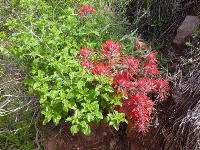 | Long-Leaved Paintbrush - Wyoming State Flower - THE BRIGHT RED FLOWERS OF LONG-LEAVED PAINTBRUSH (CASTILLEJA LINARAIEFOLIA |
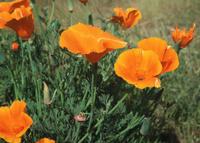 | California Poppy - California State Flower - California Indians cherished the poppy as both a source of food and for oil extracted from the plant. |
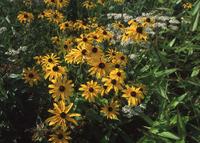 | Black-eyed Susan - Maryland State Flower - Black-eyed Susan (Rudbeckia hirta) The Black Eyed Susan has been the official Maryland flower since 1918. |
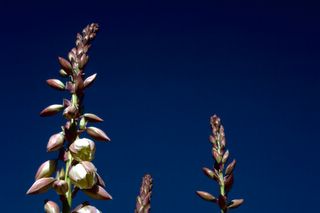 | Yacca Blossom - State Flower of New Mexico - (Yucca glauca) AKA "soapweed", "beargrass", and "Spanish bayonet". |
 | Sunflower - State Flower of Kansas - Sunflower (Helianthus annuus) Year of State Flower Legislation 1903. 10-14’ tall plant with large spadelike leaves |
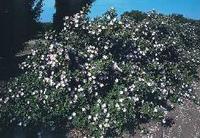 | Rose - State Flower of New York - The rose, wild or cultivated, in all its variety and colors, was made the State flower in 1955. |
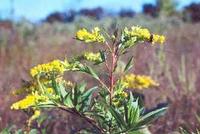 | Goldenrod - State Flower of Kentucky - Goldenrod (Solidago canadensis var. scabra) adopted as state flower in 1926. |
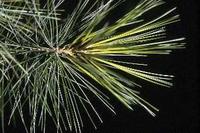 | White Pine Tassel - State Flower of Maine - White Pine Tassel(Pinus strobus L.) adopted as state flower in 1895. |
 | White Hawthorn Blossom - State Flower of Missouri - The White Hawthorn Blossom (Crataegus arnoldiana) was named the state flower of Missouri on March 16, 1923. |
 | Purple Lilac - State Flower of New Hampshire- The Purple Lilac (Syringa vulgaris)was named the state flower of New Hampshire in 1919. |
 | American dogwood - State Flower of North Carolina - American dogwood (Cornus florida) was named the state flower of North Carolina in 1941. Notable for a hardness of it's wood. |
 | Yellow Jessamine - State Flower of South Carolina - Yellow Jessamine (Gelsemium sempervirens) was named the state flower of South Carolina in 1924. |
 | 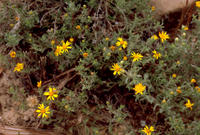 | 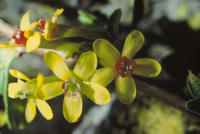 |
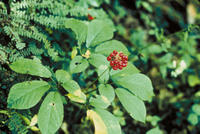 | 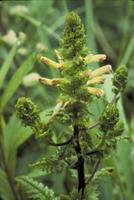 | 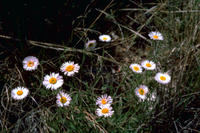 |
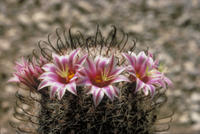 | 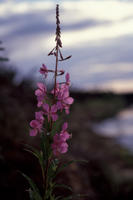 | 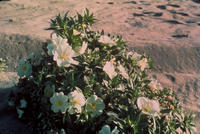 |
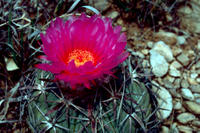 | 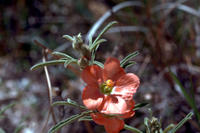 | 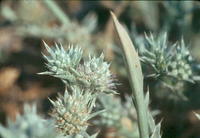 |
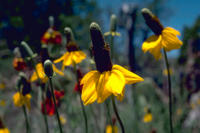 | 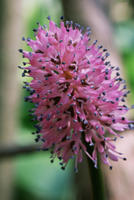 | 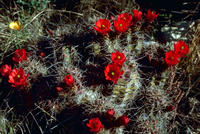 |
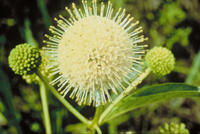 | 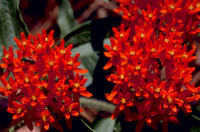 | 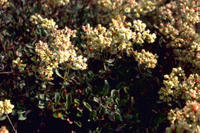 |
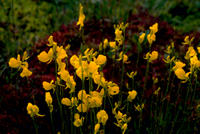 | 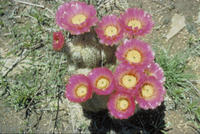 | 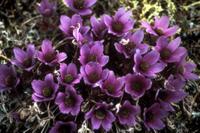 |
 | 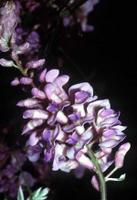 | 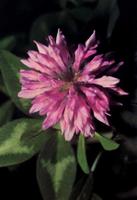 |
Leave a comment, make a request, Let this small sampling be a guide to better quality, more plentiful, public domain, royalty free, copyright free, high resolution, images, stock photos, jpeg, jpg, free for commercial use, clip art, clipart, clip-art. more at Public Domain Clip Art and clip art or public domain
RELATED: Friday, July 22, 2005 Long-Leaved Paintbrush - Wyoming State Flower, Saturday, July 23, 2005 California Poppy - California State Flower, Sunday, July 24, 2005 Black-eyed Susan - Maryland State Flower, Tuesday, July 26, 2005 Yacca Blossom - State Flower of New Mexico, Tuesday, July 26, 2005 Sunflower - State Flower of Kansas, Wednesday, July 27, 2005 Rose - State Flower of New York, Thursday, July 28, 2005 Goldenrod - State Flower of Kentucky, Friday, July 29, 2005 White Pine Tassel - State Flower of Maine, Saturday, July 30, 2005 White Hawthorn Blossom - State Flower of Missouri, Sunday, July 31, 2005 Purple Lilac - State Flower of New Hampshire, Monday, August 01, 2005 American dogwood - State Flower of North Carolina, Tuesday, August 02, 2005 Yellow Jessamine - State Flower of South Carolina, Wednesday, August 03, 2005 Red Clover - State Flower of Vermont, Thursday, August 04, 2005 American wisteria - (Wisteria frutescens), Saturday, August 06, 2005 Air Plant (Tillandsia fasciculata), Sunday, August 07, 2005 Alpine Anemone (Anemone drummondii, Tuesday, August 09, 2005 California barrel cactus (Ferocactus cylindraceus), Thursday, August 11, 2005 Bladderwort (Utricularia L.), Friday, August 12, 2005 Buckwheat, west Humboldt (Eriogonum anemophilum Greene), Saturday, August 13, 2005 Butterfly Milk Weed (Asclepias tuberosa L.), Sunday, August 14, 2005 Buttonbush (Cephalanthus occidentalis), Monday, August 15, 2005 Claret Cup Cactus (Echinocereus Engelm), Tuesday, August 16, 2005 Swamp Pink (Helonias bullata L), Wednesday, August 17, 2005 Coneflower (Dracopis Cass), Friday, August 19, 2005 Delta Coyote Thistle (Eryngium racemosum), Saturday, August 20, 2005 Desert Mallow (Sphaeralcea ambigua), Sunday, August 21, 2005 Eagle Claw Cactus (Ancistrocactus horizonthalonius), Monday, August 22, 2005 Eureka Dunes evening-primrose (Oenothera californica), Tuesday, August 23, 2005 Fireweed (Chamerion angustifolium), Wednesday, August 24, 2005 Fishhook Cactus (Sclerocactus), Thursday, August 25, 2005 Fleabane Aster (Erigeron coulteri Porter), Friday, August 26, 2005 Furbish Lousewort (Pedicularis furbishiae), Saturday, August 27, 2005 American ginseng (Panax quinquefolius L.), Sunday, August 28, 2005 Golden Currant (Ribes aureum), Monday, August 29, 2005 woolly groundsel (Packera cana), Wednesday, August 31, 2005 Hawaiian vetch (Vicia Menziesii),















